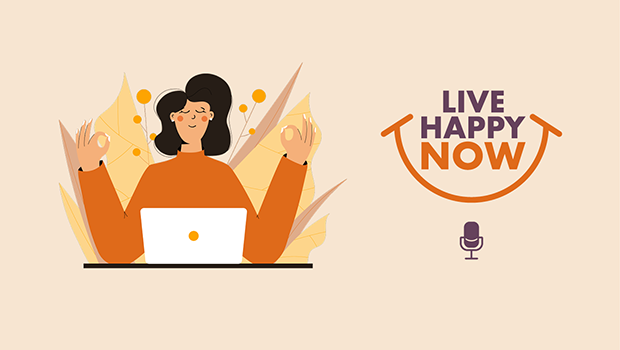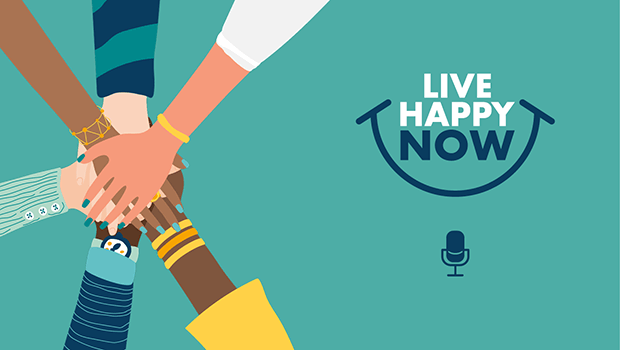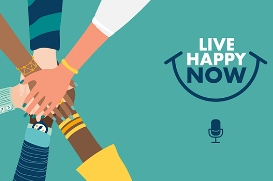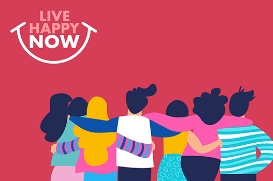New book offers three ways to power through challenges and reach your full potential.
Caroline Adams Miller had to develop grit to keep herself alive. She had success and talent but was battling an eating disorder. Then one day a woman stood up in a 12-step recovery meeting and said she was recovering from bulimia one day at a time. Caroline was transformed the moment when she realized that she could enlist the support of others and take her own eating disorder out of the shadows. She went from hopeless to hopeful. It was her turning point.
Today she calls grit her life’s work. In her new book, Getting Grit: The Evidence-Based Approach to Cultivating Passion, Perseverance, and Purpose, Caroline shows us—through meticulous research from positive psychology experts—how to develop the trait of authentic grit, one of the key determinants of life satisfaction and success.
LIVE HAPPY: You define grit as perseverance and passion for long-term goals and note that as a culture, we need more of it. Where have we gone wrong?
CAROLINE ADAMS MILLER: I do believe a lot of it started with the self-esteem parenting movement. The belief was if you praise children and tell them that they are special and winners they will believe that and work very hard and live up to that standard of being special. But now we know from the work of Carol Dweck, Ph.D., that it creates a “fixed mindset” that makes people afraid to take risks or not have that praise and it stops them from working hard.
Rats that are given sugar water in mazes stop trying to solve the maze; they just sit down and get fat. This is what happened to an entire generation. We have everyone getting trophies and dumbed-down standards. We have playgrounds with woodchips so no one skins a knee. Or phonics made easy. We protect children from themselves to the point where they don’t have to learn any coping skills, or have to learn from failure. And it just keeps getting worse.
Listen to our podcast with Caroline Miller:
LH: You point out that people need to get comfortable with being uncomfortable to develop grit. What do you mean by that?
CAM: I heard a great quote on Wharton Business Radio [Sirius XM channel] the other day. I think it’s the answer. “All learning takes place on the cusp of anxiety.” If you are always in the safe place, it’s the status quo. You aren’t learning. There isn’t that kind of edge of anxiety where you are being forced to pay attention and transgress boundaries of physical safety, emotional safety and intellectual safety—so you are never really changing. And stress is what causes people to become more resilient, not less resilient. People get stronger by doing hard things and braver by being courageous.
Read more by Caroline Miller: The 6-Step Goal-Setting Challenge
LH: What are some of the ways people can cultivate grit?
CAM: People who have grit ask themselves, “Why not?” When faced with something bigger than themselves, they ask, “Why not me?” Change the channel in your brain. Go to another place in your brain. Have a slogan. One day at a time. Attitude of gratitude. Easy does it. Or use a symbol, think of a person, find a way to hijack your brain and go to the best channel for you. Create a team around you. Who can I positively connect with today? Givers end up at the top of the success ladder. They brainstorm. They find ways to comfort themselves.
LH: If people could take just one thing away from your book, what would that be?
CAM: Anyone can cultivate grit. It is not reserved for Olympic gold medalists. If I can do it and go from being successful, talented and looking good, to realizing I didn’t have it and failing in an epic way that almost cost me my life, and then rebuilding authentically from that, I really do believe everybody can strive for grit—because you are going for what matters in life.
Getting Grit: The Evidence-Based Approach to Cultivating Passion, Perseverance, and Purpose is available at Amazon and wherever books are sold.
Sandra Bilbray is a regular contributor to Live Happy and the founder and CEO of TheMediaConcierge.net.















